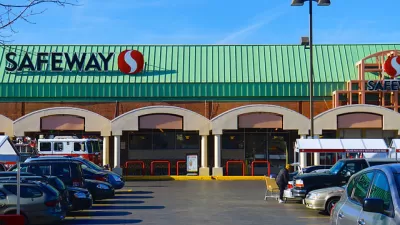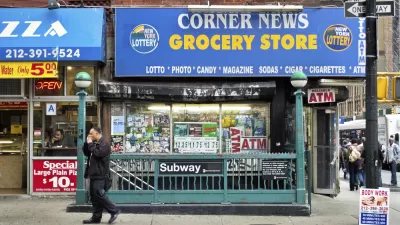How enforcing one federal law, ignored since the 1980s, could bring back small grocers and ensure more people have convenient access to fresh foods.

In a piece for The Atlantic, Stacy Mitchell explains the rise of “food deserts” — communities with limited or non-existent access to fresh food options — in the late 1980s as a result of a federal policy change.
“Food deserts are not an inevitable consequence of poverty or low population density, and they didn’t materialize around the country for no reason,” Mitchell writes. They occurred because the Reagan administration stopped enforcing the 1936 Robinson-Patman Act, allowing large grocery retailers to strong-arm suppliers and centralize their national purchasing power, pricing small retailers out of the market.
This led to a “massive die-off” of independent stores, Mitchell explains, and not just in the grocery sector: “From 1982 to 2017, the market share of independent retailers shrank from 53 percent to 22 percent.”
For Mitchell, “If you were to plot the end of Robinson-Patman enforcement and the subsequent restructuring of the retail industry on a timeline, it would closely parallel the emergence and spread of food deserts.” Small stores couldn’t keep up with product prices, and their customers couldn’t afford to pay more. “But once the independent stores closed, the chains no longer had to invest in low-income areas. They could count on people to schlep across town to their other locations.”
Mitchell asserts that enforcing the Robinson-Patman Act again is the key to eliminating food deserts and ensuring that all Americans have convenient access to fresh foods in their communities.
FULL STORY: The Great Grocery Squeeze

Maui's Vacation Rental Debate Turns Ugly
Verbal attacks, misinformation campaigns and fistfights plague a high-stakes debate to convert thousands of vacation rentals into long-term housing.

Planetizen Federal Action Tracker
A weekly monitor of how Trump’s orders and actions are impacting planners and planning in America.

In Urban Planning, AI Prompting Could be the New Design Thinking
Creativity has long been key to great urban design. What if we see AI as our new creative partner?

Cal Fire Chatbot Fails to Answer Basic Questions
An AI chatbot designed to provide information about wildfires can’t answer questions about evacuation orders, among other problems.

What Happens if Trump Kills Section 8?
The Trump admin aims to slash federal rental aid by nearly half and shift distribution to states. Experts warn this could spike homelessness and destabilize communities nationwide.

Sean Duffy Targets Rainbow Crosswalks in Road Safety Efforts
Despite evidence that colorful crosswalks actually improve intersection safety — and the lack of almost any crosswalks at all on the nation’s most dangerous arterial roads — U.S. Transportation Secretary Duffy is calling on states to remove them.
Urban Design for Planners 1: Software Tools
This six-course series explores essential urban design concepts using open source software and equips planners with the tools they need to participate fully in the urban design process.
Planning for Universal Design
Learn the tools for implementing Universal Design in planning regulations.
Appalachian Highlands Housing Partners
Gallatin County Department of Planning & Community Development
Heyer Gruel & Associates PA
Mpact (founded as Rail~Volution)
City of Camden Redevelopment Agency
City of Astoria
City of Portland
City of Laramie





























